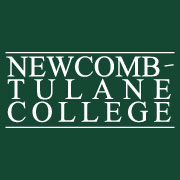A Different Take: Engineering Water Infrastructure
This summer, I worked with the Drinking Water State Revolving Fund (DWSRF) team in the Office of Ground Water and Drinking Water, a division of the greater Office of Water at EPA Headquarters. In this position, I combined my engineering knowledge and capability with my environmental passion and my writing and analytical skills to produce measurable and notable contributions to the team.
The DWSRF, created by the Safe Drinking Water Act in 1996, is a federal program that provides financial and technical assistance to drinking water programs in all 50 states, as well as Puerto Rico and the District of Columbia. It does so through favorable low-interest loan programs with occasional grants or loan forgiveness for needier communities. In FY 2018, the DWSRF funding for the states, D.C., and territories totaled over one billion dollars. A critical aspect of the success of the DWSRF program is its close oversight and strict requirements for project eligibility. Specifically, there are requirements for technical, financial, and managerial capacity of systems to be able to receive DWSRF assistance.
My long-term project was to update and correct the information and case studies contained in a set of five engineering reports first commissioned during the Recovery Act (2009) for the DWSRF. These reports are to be released to state and local governments as a resource for them in managing and updating their drinking water facilities and programs, particularly in conjunction with assistance from the DWSRF program. The reports were very long and technical and needed informational updates, as well as updates to all citations and resources embedded in the documents. To update the many case studies included in the reports, I reached out to state and local contacts to get updates on the systems highlighted and also checked the systems’ current states of compliance with drinking water regulations by using the federal databases with that information. I made content changes to adjust the focus to be more relevant to systems today, post-Recovery Act, and additionally made the reports more accessible to readers by adding glossaries and other components to enhance the documents’ readability.
Another impactful project I worked on was the production of a fact sheet and collection of case studies regarding a class of drinking water contaminants of growing concern called per- or poly-fluorinated alkyl compounds, or PFAS. The process entailed researching options for PFAS detection and treatment, culling important resources for water systems regarding PFAS, determining what PFAS-related expenses could be eligible for DWSRF funding, and compiling all of this information into a fact sheet aligned with EPA publication standards. The fact sheet underwent six rounds of revisions with colleagues and will be published on the federal EPA website along with the accompanying case studies illustrating PFAS treatment options and keys to their successful implementation. In the course of compiling case study data, I spoke directly to community representatives at various scales to directly gather information regarding their experience and lessons learned.
The DWSRF is an incredible resource for community water systems, particularly those in small or otherwise disadvantaged communities. However, many of those systems are either unaware of or intimidated by the federal funding programs available to them, laden as they are with requirements regarding eligibility and accountability. In order to help states promote their DWSRF programs, I created a set of versatile brochures for state programs to customize and distribute to systems in their communities. The brochures were designed comparably to those distributed by our sister program, the Clean Water State Revolving Fund (CWSRF). I created formats for both web and print publication and went through several rounds of edits with colleagues to arrive at final versions of the brochures.
My final project of note was to begin a cost model analysis of the DWSRF Needs Survey, an exhaustive and nationally representative survey performed every ten years to gain an understanding and projection of the state of funding needs for drinking water systems for the coming years. The goal of the project was to assess the accuracy of the current model and to obtain more accurate cost models for pipe rehabilitation and replacement projects in particular. I therefore compiled a list of pipe rehabilitation and replacement projects to contact in various states, pulling from a variety of project sizes and types and narrowing down the list according to which would most likely have information for the five crucial data points we were looking for. This was a crucial first step to a project that will continue without me to completion.
I am proud to have made notable contributions to a large and impactful program this summer while learning about government work and various sectors within the environmental realm that I hadn’t previously explored. I had an incredible experience. The full-time nature of the internship prevented me from significantly defraying the cost of housing with part-time jobs, and this grant has covered my housing costs.
I will graduate at the end of this academic year with a bachelor’s degree in chemical engineering. I plan to start a business in New Orleans in which I will work to coordinate sustainable waste repurposing for chemical manufacturers in Louisiana to create more sustainable networks among those manufacturers in a way that is profitable for all parties. The work I performed this summer, along with my exposure to different aspects of sustainability and health-related work, played a vital role in my decision. By reducing the amount of chemical waste released into the environment and repurposing that waste into new products, I hope to make a difference in the levels of pollutants to which humans, plants, and animals in our region are exposed in the long term. I am grateful to Tulane for supporting the important work I did this summer and enabling me to continue pursuing my environmental and professional goals.
Written by Melissa Liberson, Sisselman Grant recipient, 2018-2019
